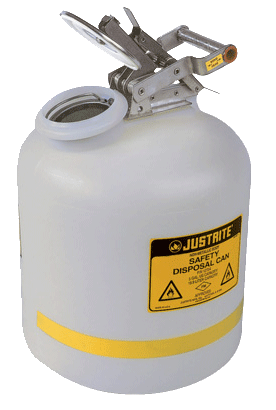Industrial Wastewater Treatment: Custom-made Solutions for Facility Wastewater Difficulties
Industrial Wastewater Treatment: Custom-made Solutions for Facility Wastewater Difficulties
Blog Article
Exactly How Fluid Waste Disposal Works: A Thorough Introduction of Strategies and Technologies Used

Summary of Liquid Waste Types
The intricacy of fluid waste types requires an extensive understanding of their features and effects for disposal. Fluid waste can extensively be categorized into numerous kinds, consisting of industrial, community, agricultural, and contaminated materials. Each group shows unique buildings, needing certain monitoring strategies to mitigate ecological and health and wellness dangers.
Industrial liquid waste stems from producing procedures and often contains a series of impurities, such as hefty metals, solvents, and natural compounds. Community fluid waste, mainly comprising wastewater from houses and industrial establishments, includes raw material, nutrients, and microorganisms (industrial wastewater treatment). Agricultural liquid waste, consisting of runoff from farms, may have fertilizers, chemicals, and animal waste, posing dangers to water high quality and ecological communities
Hazardous fluid waste is characterized by its toxicity, sensitivity, or possible to create injury. Comprehending these diverse fluid waste kinds is critical for creating effective disposal methods and making certain compliance with ecological laws.
Physical Treatment Techniques

Screening is the preliminary step, where bigger bits and particles are eliminated from the liquid waste utilizing displays or grates. In sedimentation storage tanks, heavier fragments resolve at the bottom, forming a sludge layer, while the made clear liquid can be more treated.
Filtration is another vital method that entails passing the liquid with porous products, such as sand or membranes, to record smaller fragments. This step improves the top quality of the liquid, making it suitable for subsequent therapy processes.

Chemical Therapy Strategies
Chemical treatment strategies are vital for effectively handling fluid waste, especially in dealing with liquified and colloidal contaminants that physical techniques might not sufficiently get rid of. These methods make use of various chemical representatives to counteract, precipitate, or transform hazardous materials into less harmful types.
One usual approach is coagulation and flocculation, where chemicals such as alum or ferric chloride are contributed to promote the gathering of suspended fragments. This procedure boosts sedimentation, enabling for less complicated removal of the resulting sludge. Furthermore, oxidation procedures, using representatives like chlorine or ozone, are employed to damage down intricate natural substances and pathogens, rendering the waste much safer for discharge or more treatment.
Neutralization is another important strategy, which readjusts the pH of acidic or alkaline waste streams to neutral degrees, preventing possible harm to downstream systems and the environment. In addition, advanced oxidation processes (AOPs) use mixes of oxidants and ultraviolet light to break down relentless toxins, attaining a higher degree of therapy performance.
Organic Therapy Processes
Organic treatment processes play a critical duty in the monitoring of fluid waste by using bacteria to disintegrate natural matter and decrease contaminant degrees. These procedures can be generally classified into aerobic and anaerobic therapies, each using details microbial areas to accomplish efficient waste degradation.
Aerobic therapy entails making use of oxygen to help with the breakdown of natural products by germs. This procedure is generally carried out in triggered sludge systems, where aeration visite site containers supply a helpful setting for microbial development, resulting in the oxidation of organic toxins. The resultant biomass can be separated from dealt with effluent via sedimentation.
In comparison, anaerobic treatment happens in the lack of oxygen, depending on various germs to damage down raw material. This approach is especially beneficial for high-strength waste, as it creates biogas, a renewable resource resource, while minimizing sludge production. Technologies such as anaerobic digesters are often employed in municipal and commercial applications.
Both aerobic and anaerobic biological therapies not only minimize the environmental influence of fluid waste yet also assist in resource healing, making them vital elements of sustainable waste administration methods. Their versatility, performance, and efficiency support their widespread execution across various markets.
Arising Technologies in Disposal
Ingenious techniques to liquid garbage disposal are swiftly developing, driven by advancements in modern technology and a raising focus on sustainability. Amongst these arising technologies, membrane bioreactors (MBRs) have actually gotten traction for their ability to integrate biological therapy with membrane layer filtration, resulting in premium effluent that can be reused in various applications. MBRs enable smaller impacts and a lot more reliable operations compared to conventional systems.
An additional find out this here promising advancement is the usage of anaerobic food digestion integrated with nutrient recuperation modern technologies, which not only deals with liquid waste but likewise creates biogas and recuperates valuable nutrients like nitrogen and phosphorus. This twin benefit boosts resource efficiency and decreases environmental impact.
Additionally, advanced oxidation procedures (AOPs) are being embraced for the deterioration of complex natural toxins. These methods make use of effective oxidants and catalysts to damage down pollutants at the molecular degree, offering a highly efficient solution for difficult waste streams.
Moreover, the integration of expert system and artificial intelligence in waste management systems is maximizing functional performance and predictive upkeep, resulting in decreased expenses and improved environmental conformity. These innovations reflect a substantial change towards more efficient and sustainable liquid garbage disposal practices.
Final Thought
To conclude, effective liquid garbage disposal demands a thorough understanding of different methods and technologies. The combination of physical, chemical, and organic treatment approaches guarantees the reliable management of diverse waste kinds. Furthermore, the introduction of innovative innovations boosts treatment effectiveness and promotes sustainability in waste monitoring practices. By constantly progressing these methods, it comes to be possible to address the growing challenges connected with liquid waste, ultimately adding to environmental protection and resource healing.
Fluid waste disposal is an important aspect of ecological monitoring, calling for a comprehensive understanding of numerous strategies and innovations customized to different waste types. read more Fluid waste can generally be classified right into numerous kinds, including industrial, community, agricultural, and unsafe waste. Agricultural liquid waste, consisting of overflow from ranches, may have fertilizers, pesticides, and pet waste, posing threats to water top quality and ecological communities.
Various physical treatment methods play a crucial role in taking care of liquid waste successfully - industrial wastewater treatment.In conclusion, reliable fluid waste disposal demands a thorough understanding of numerous strategies and modern technologies
Report this page